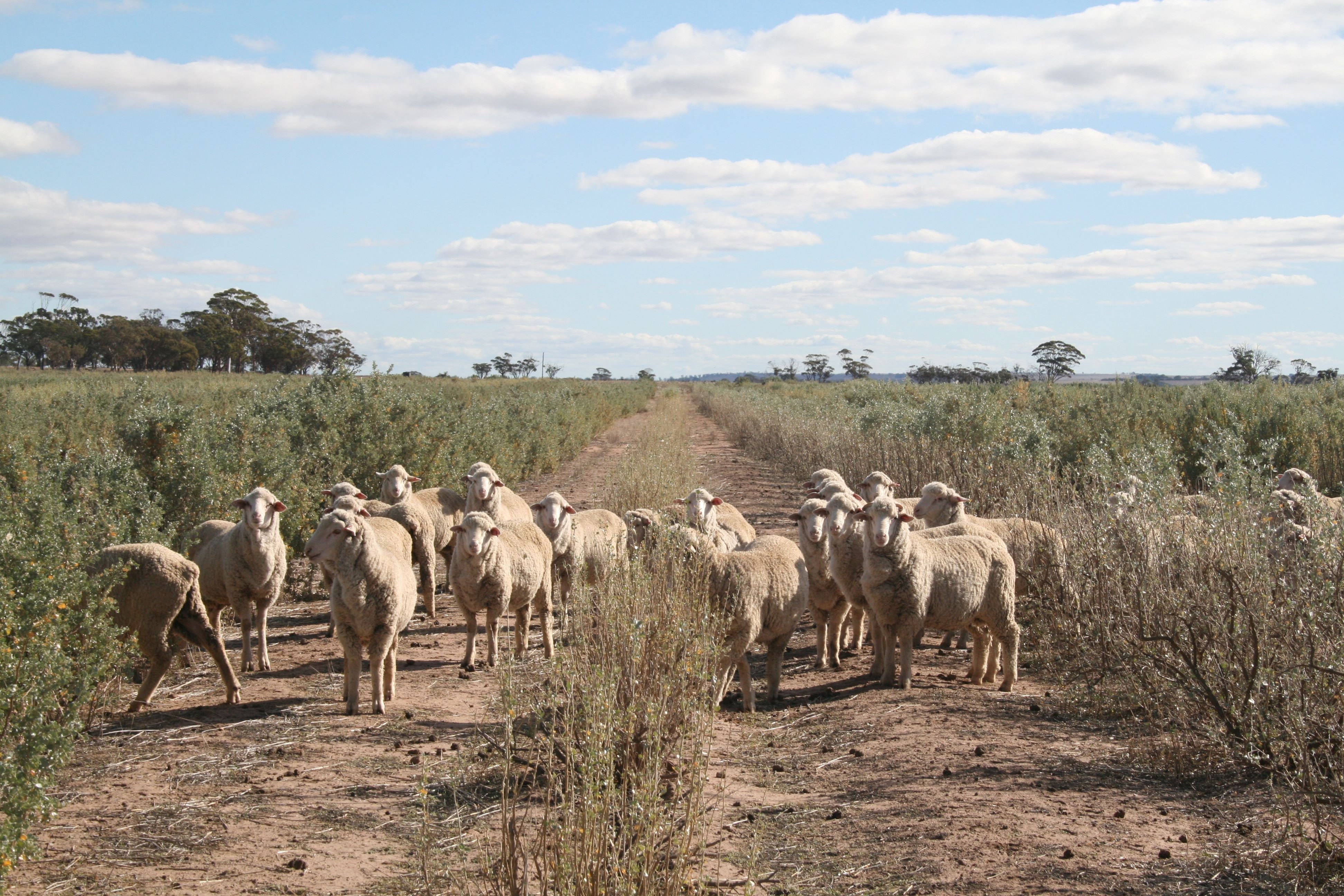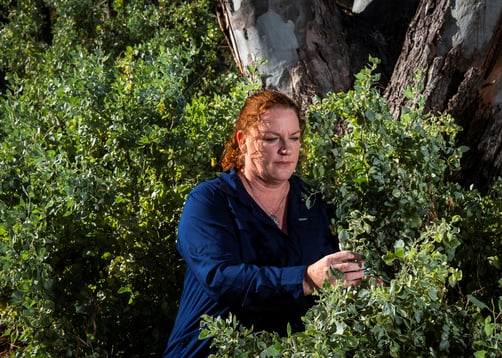 An elite variety of Oldman Saltbush that has yielded greater wool and meat production is being planted in the hundreds of thousands across Australia’s south-east this winter.
An elite variety of Oldman Saltbush that has yielded greater wool and meat production is being planted in the hundreds of thousands across Australia’s south-east this winter.
Developed over 15 years by CSIRO and partners in government and industry, Anameka Saltbush is a specially-selected variety of the drought-tolerant native shrub that has also been proven to reduce the need for supplementary feeding.
Unique for its higher nutritional value and improved palatability for livestock, and its potential to regenerate the topsoil of land that is too saline or infertile, the plant has found favour with producers as they prepare for drier conditions heralded by a potential El Nino.
CSIRO agricultural scientist Hayley Norman (pictured below) said during dry years when there was a shortage of available feed, Anameka Saltbush could provide key nutrients that improve livestock productivity and health.

“Anameka Saltbush is a moderate-energy, high crude protein and sulphur feed source that is full of essential minerals and antioxidants,” Dr Norman said.
“It grows well on most landscapes, and once established, Anameka Saltbush can become a ‘living haystack’ for grazing livestock for more than 20 years if managed correctly.
“We’re now bringing these benefits to new regions across Australia’s south-east to carry farmers through poor seasons and build their resilience to drought.”
Anameka was selected from 60,000 saltbush plants collected from across Australia, each with different qualities.
In coming up with the ideal saltbush to improve farm profit, the team was keen to find a higher energy variety that sheep and cattle loved eating.
Dr Norman said part of this was to account for sheep being fussy eaters.
"We followed their lead by observing which plants the sheep preferred in the paddock," Dr Norman said.
"We found stark differences between shrub varieties with some picked bare while others were left untouched.
"Season after season, the sheep kept going back to the same plants. Our analysis found these to have higher energy values, ticking the box for what we were looking for."
CSIRO’s Drought Resilience Mission is driving wider adoption of Anameka Saltbush in drought-prone regions across south-east Australia for the first time.
CSIRO modelling indicates that Anameka shrub systems offer 20% higher economic returns compared to standard saltbushes, particularly in relatively dry years. This reduces exposure to financial risks associated with climate variability or drought.
Marcus Hooke, a Merino producer at Booroorban in southern New South Wales, is doubling the number of Anameka Saltbush in his paddocks after successful establishment last year.
“It’s early days but we believe the benefits of saltbush will be long-term,” Mr Hooke said.
“For us, the benefits will be two-sided in providing crucial shelter to lambs to improve their survivability out on the plains during colder months, and for feed to provide energy during dry seasons.”
Anameka, as well as standard saltbushes, have traditionally been grown in Western Australia for salinity management.
The new plantings build on six million Anameka Saltbush already planted across 8000 hectares, mostly in WA, since commercial release.
This year marks 325 farmers adopting Anameka saltbush across Australia.
 Results
Results
